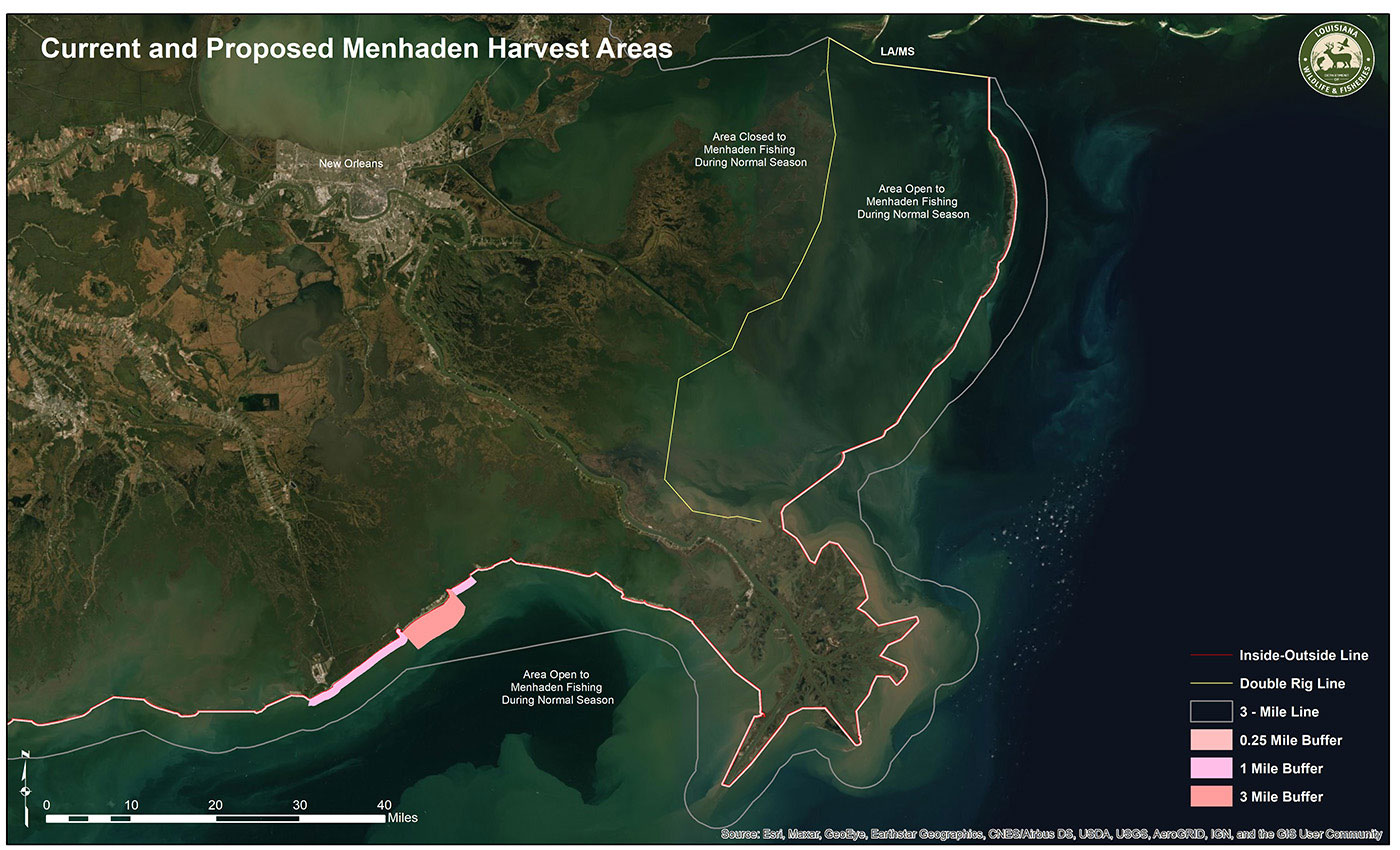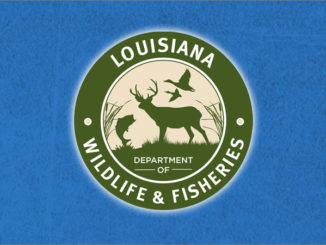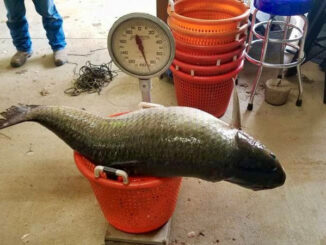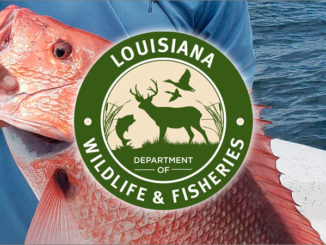 At its most recent January meeting, the Louisiana Wildlife and Fisheries Commission amended a Notice of Intent (NOI) that creates coastal buffer zones to Gulf menhaden harvest regulations. The amendment removes the ¼ mile buffer on the outside of the double-rig line within Breton and Chandeleur Sounds.
At its most recent January meeting, the Louisiana Wildlife and Fisheries Commission amended a Notice of Intent (NOI) that creates coastal buffer zones to Gulf menhaden harvest regulations. The amendment removes the ¼ mile buffer on the outside of the double-rig line within Breton and Chandeleur Sounds.
The NOI would modify the existing rule regarding where in Louisiana waters commercial harvest of Gulf menhaden may occur. The proposed changes would implement a coastwide buffer of ¼ mile from the established inside-outside line (the line that separates Louisiana’s inshore waters from offshore waters). The area beginning at the eastern shore of Belle Pass to the eastern shore of Caminada Pass would require a 1-mile buffer, the area from the eastern shore of Caminada Pass to the eastern shore of Barataria Pass would require a 3-mile buffer, and the area from the eastern shore of Barataria Pass to the eastern end of Grand Terre Island would require a 1-mile buffer.
 This NOI was brought forward due to user conflicts between private recreational and charter boat anglers and the commercial menhaden fishery. The Gulf of Mexico stock of menhaden is not overfished and is not undergoing overfishing. Scientific studies have estimated the amount of bycatch of recreationally important species such as red drum and spotted seatrout are minimal, irrespective of the status of those populations.
This NOI was brought forward due to user conflicts between private recreational and charter boat anglers and the commercial menhaden fishery. The Gulf of Mexico stock of menhaden is not overfished and is not undergoing overfishing. Scientific studies have estimated the amount of bycatch of recreationally important species such as red drum and spotted seatrout are minimal, irrespective of the status of those populations.
To view the full notice of intent, please visit here.
Next steps
- A public hearing on the proposed substantive changes will be held by the Department of Wildlife and Fisheries on February 22, 2022, at 5:30 p.m. at LDWF headquarters in the Joe Herring Room at 2000 Quail Drive, Baton Rouge, LA 70898.
- Results from the public hearing will be presented to the Louisiana Wildlife and Fisheries Commission on March 3.
- If the Commission chooses to move the proposed rule towards final promulgation at its March meeting, the proposed rule will move to Legislative oversight.
- Following the 30-day oversight period, the proposed rule could be published as a final rule as soon as April 20.


